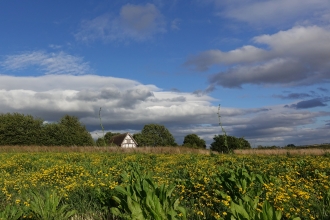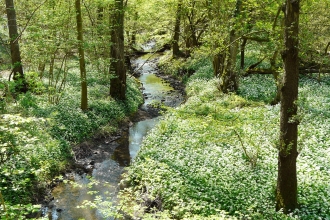Nature Reserves
There is limited parking at many of our nature reserves so please return at a less busy time if there is no parking available when you arrive.
Thank you for being considerate to our staff, volunteers, other visitors and wildlife when visiting our nature reserves. Please watch our short video to find out how you can help protect wildlife…
Nature reserves are refuges for wildlife
Our nature reserves are special places for wildlife. Please keep to paths and pay attention to signage. Dogs are welcome on some nature reserves but please keep them on a lead at all times and take away any mess. Please follow these simple steps to ensure the safety of our wildlife:
- Keep dogs on leads. Even the friendliest of dogs can appear threatening and may cause a bird to leave a nest altogether. It’s not just ground-nesting birds that are at risk – many species nest (summer) and roost (winter) in vegetation close to the ground alongside paths.
- Stick to paths. Whether it’s a public right of way, a bridleway or a permissive path, please stick to these and don’t make your own paths. Only take horses or cycles on designated bridleways.
- Stay alert. If a bird is calling ‘at you’, you’re too close to the nest. If it’s carrying food, let it feed its young. Don’t pause and keep on walking.
- Report bad or suspicious behaviour. If you see anything suspicious – wildlife crime, fly-tipping, fires. motorbikes or more, please report this using 101 (non urgent) or 999 (urgent)
We own and manage more than 75 amazing places for wildlife. You are welcome to visit most of these to immerse yourself in the beauty of nature and the wonders of Worcestershire's wildlife. Almost 30, however, are true wildlife havens (not listed on our website) and can only be visited for research purposes with special permission from the Trust - please get in touch if you would like to know more about accessing any of these delicate and special places.
To help us look after all these fabulous places and to discover more about the wildlife that lives there, why not become a member.
Your group is welcome to visit without a guide but to ensure you have the best visit that isn't compromised by work that's taking place, education activities or other group visits, please contact Rob (01905 754919) to book your visit. Please also consider making a donation to the Trust to help with the ongoing costs of managing our nature reserves.
Nature Reserves
Filters
25 results
Hunthouse Wood
This dingle woodland reserve contains a rich mixture of broad leaved trees, ferns & mosses
Ipsley Alders Marsh
This important remnant marsh in the middle of Redditch consists of sedge peat, a rare habitat in the Midlands.
Knowles Coppice
A small woodland in the heart of the Wyre Forest.

Lower Smite Farm
A 150 acre working arable farm with a nature trail, wildlife garden and the Trust's operational base & Environmental Education Centre.
Monkwood
A semi-natural ancient woodland that is renowned for its ground flora & butterfly species. Land at the adjacent Green Farm is undergoing restoration and recreation of historic habitats,…
Newbourne Wood
This small plantation woodland, once part of a 12th century deer park, forms part of the wooded skyline surrounding the upper Arrow valley around Alvechurch.
Penorchard Meadows
A series of unimproved meadows with a rich diversity of wildflowers; one of the largest remaining areas of semi-natural grassland in Worcestershire.
Piper's Hill & Dodderhill Commons
Also known as Hanbury Woods, this relict wood pasture reserve contains some of the oldest trees in the county.

The Betts Reserve
This tiny part of the important Wyre Forest consists mainly of oak, hazel coppice, alder and ash.
The Christopher Cadbury Wetland Reserve at Upton Warren
Worcestershire’s premier bird-watching reserve, Upton Warren attracts birds throughout the year.
